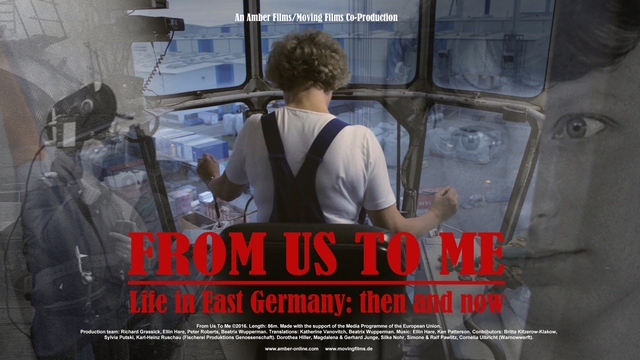From Us to Me
East Germany then and now: remembering life in the GDR
 For 45 years East Germany was ruled by a strict and secretive communist government, on the geographical edge but political heart of the Soviet bloc. In 1987, a British film crew gained unprecedented access to film everyday life inside the GDR - but only the side of life the state let them see. In this doc the crew return to the places and people they visited then, to see how their lives have changed and how they recall the "workers' paradise".
For 45 years East Germany was ruled by a strict and secretive communist government, on the geographical edge but political heart of the Soviet bloc. In 1987, a British film crew gained unprecedented access to film everyday life inside the GDR - but only the side of life the state let them see. In this doc the crew return to the places and people they visited then, to see how their lives have changed and how they recall the "workers' paradise".
"On 3 october 1990, German Unity Day, I was sent into early retirement." Karl-Heinz, a former fisherman, remembers the unification with regret, and he is not alone in doing so. With the economic prosperity of the west came job insecurity, which severely affected people like Karl-Heinz who suddenly found himself without a job. This was the case for many former comrades who miss the stability of the time; "there was no unemployment then. It did not exist."
But for some, there was ultimately not much difference. "For me, little has changed", explains Sylvia, who remembers the time with indifference. "All the things in the shops I couldn't buy then, because I wasn't rich, I still can't buy today." In a stoical manner, she relates how life's challenges remain the same regardless of the political regime in charge.
German reunification brought with it different things for different people. For those whose lives were shaped behind the iron curtain, such sudden political upheaval had a seismic impact for better or for worse. This insightful documentary explores the lives of ordinary citizens of the opaque German Democratic Republic, as well as how their lives and prospects have changed since.






